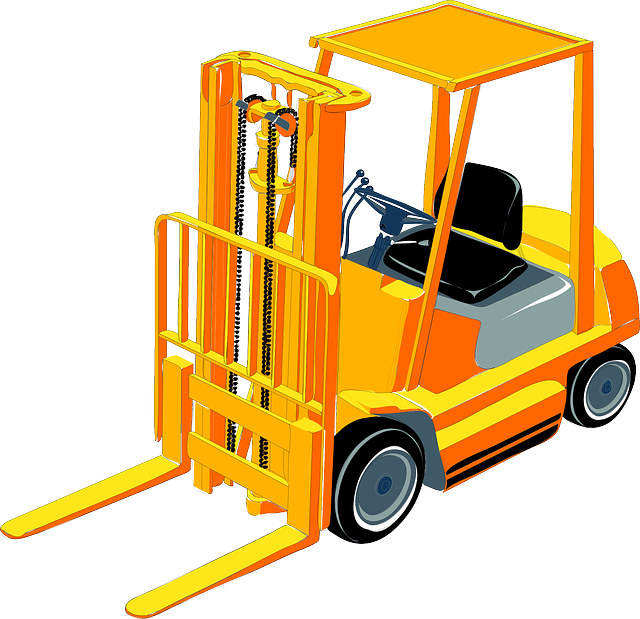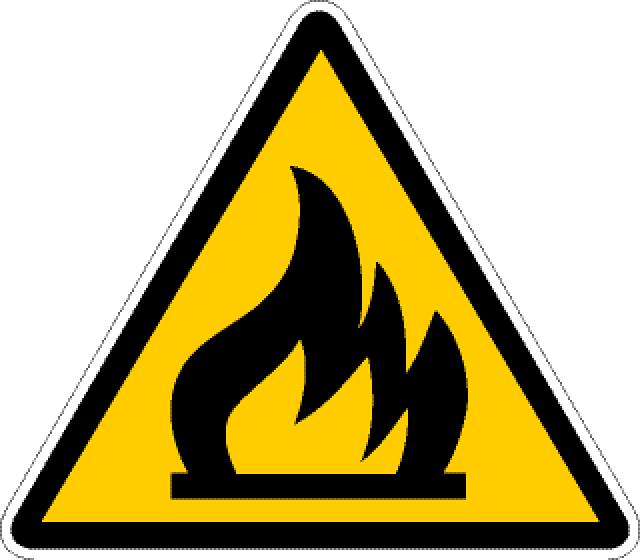Why Is Warehouse Safety Important?
Warehouses can be inherently dangerous places, with numerous mechanical and electrical hazards that can put the well-being of workers at risk. It is imperative for warehouse managers to prioritize safety and implement comprehensive safety measures to protect their warehouse workers. In this ‘Safety Inspection Checklist For Warehouse’ article, we will explore a detailed safety checklist for warehouses, covering various aspects common warehouse safety, such as hazard identification, risk assessment hazard communication, security procedures, employee training, and emergency preparedness.
By following these guidelines, warehouse managers protect workers can create a safe working environment and prevent accidents and injuries.
Warehouse Safety Inspections
Identifying Hazards in the Warehouse

Hazard identification is the first and crucial step towards ensuring warehouse safety. Warehouse safety managers should conduct regular and thorough inspections to identify potential risks and hazards that may pose a threat to the well-being of employees and the smooth operation of the facility.
These inspections should cover all areas of the warehouse, including storage racks, equipment, walkways, loading dock doors, loading docks or bays, and even the less frequently visited corners.
During a warehouse inspection warehouse managers should keep a keen eye out for various hazards that could potentially lead to accidents and injuries. Some common hazards to watch out for during a warehouse safety inspection include:
- Falling objects: Loose items or improperly stacked materials that may fall and cause harm to employees or damage to property.
- Slippery surfaces: Spills, leaks, or wet floors that can lead to slips, trips, and falls.
- Tripping hazards: Obstacles or cluttered areas that may cause employees to trip and injure themselves.
- Inadequate lighting: Poorly lit areas that can hinder visibility and increase the risk of accidents.
- Forklift traffic: The movement of forklifts and other powered industrial trucks that can pose a significant danger if not properly managed and controlled.
- Chemical storage: Improper storage, handling, or labelling of hazardous chemicals that may result in chemical spills, leaks, or exposure.
- Fire hazards: The presence of flammable materials, faulty electrical systems, or inadequate fire prevention measures that can lead to fires and endanger the lives of employees.
Identifying these hazards is just the beginning. Once hazards are identified, warehouse managers should prioritize their elimination or mitigation to reduce the likelihood of accidents occurring.
It is essential to develop and implement effective warehouse safety inspection protocols, procedures, and training programs to address each identified hazard appropriately.
Report Potential Hazards
Regular communication and collaboration between the warehouse staff, managers, supervisors, and employees are vital in maintaining a safe working environment. Employees should be encouraged to report any potential hazards they come across during their daily tasks, ensuring that hazards are promptly addressed and resolved.

Furthermore, warehouse managers should consider conducting regular warehouse safety inspections, audits and reviews to ensure that hazard identification processes remain effective and up-to-date.
As the warehouse environment evolves, new hazards may emerge, making it crucial to stay vigilant and adapt safety measures accordingly.
By prioritizing hazard identification and taking proactive steps to eliminate or mitigate risks, warehouse managers can create a safer and healthier work environment for all employees. This commitment to safety not only protects the well-being of individuals but also contributes to the overall success and productivity of the warehouse.
Creating a Risk Assessment Plan
A comprehensive risk assessment plan is essential for warehouse safety. This involves evaluating the risks associated with common warehouse safety hazards, with each identified hazard and determining appropriate control measures to minimize those risks. The risk assessment plan should include:
- Identifying the potential consequences of each hazard
- Estimating the likelihood of each hazard occurring
- Implementing control measures to eliminate or minimize risks
- Regularly reviewing and updating the risk assessment plan
By systematically analysing risks and implementing control measures, warehouse managers can proactively address safety concerns.
Impact
When it comes to identifying the potential consequences of each hazard, it is important to consider the impact it could have on the workers, the environment, and the overall operations of the warehouse. For example, a hazard such as a chemical spill could result in injuries to workers, contamination of nearby water sources, and disruption of the workflow.
Likelihood
Estimating the likelihood of each hazard occurring requires a thorough understanding of the warehouse’s operations and the potential triggers for each hazard. This could involve analysing historical data, conducting inspections, and consulting with experts in the field. By accurately assessing the likelihood, warehouse managers can prioritize their control measures accordingly.
Control Measures
Implementing control measures to eliminate or minimize risks is crucial in ensuring the safety of the warehouse and its workers. This could involve implementing engineering controls such as installing safety barriers or ventilation systems, administrative controls such as implementing safety protocols and training programs, occupational safety, or PPE requirements for workers.
Risk Assessment Plan

Regularly reviewing and updating the risk assessment plan is essential as new hazards may emerge or existing hazards may evolve over time. This could be due to changes in the warehouse’s operations, introduction of new equipment or technologies, or updates in safety regulations.
By staying proactive to identify safety hazards and keeping the risk assessment plan up to date, the warehouse safety managers can effectively manage and mitigate risks.
Furthermore, it is important for warehouse managers to involve their employees in the risk assessment process. Workers who are directly involved in the day-to-day operations are often the ones who have valuable insights and first-hand experience with potential hazards.
By engaging employees and encouraging their input, warehouse managers can create a more comprehensive and effective risk assessment plan.
Documenting Safety Procedures

Warehouse safety procedures should be clearly documented and easily accessible to all employees. This includes guidelines for handling hazardous materials, operating equipment, and emergency protocols. Safety procedures should cover various areas such as:
- Manual handling techniques
- Safe use of forklifts and other machinery
- Proper use of personal protective equipment (PPE)
- Fire prevention and evacuation procedures
- Emergency response protocols
Regular training should be provided to ensure employees are familiar with these procedures and understand their importance in maintaining a safe working environment.
Manual Handling
When it comes to manual handling techniques, it is crucial for employees to understand the most proper lifting techniques, and carrying methods to prevent injuries. This includes using the legs instead of the back, distributing weight evenly, and avoiding sudden movements.
By following these techniques, employees can minimize the risk of strains, sprains, and other musculoskeletal injuries.
Forklifts & Machinery
The safe use of forklifts and other machinery is of utmost importance in a warehouse setting. Employees should receive comprehensive training on operating these equipment, including proper maintenance, inspection, and handling techniques.
Understanding the weight limits, stability factors, and manoeuvring procedures can significantly reduce the risk of accidents and injuries.
Personal Protective Equipment (PPE)

In addition to equipment safety, the proper use of PPE and safety shoes is essential in maintaining a safe working environment.
Warehouse managers should provide appropriate safety equipment (based on the specific hazards present in the warehouse) to employees to protect them from potential hazards. This includes:
- High-visibility clothing and personal protective gear
- Protective footwear to prevent foot injuries
- Safety Goggles
- Gloves
- Hard hats for head protection
- Eye and ear protection for workers exposed to loud noise or flying debris
Regular inspections and replacements of PPE should be conducted to ensure their effectiveness in protecting employees from potential injuries.
Fire Prevention
Fire prevention and evacuation procedures should also be documented and communicated to all employees. This includes regular fire drills, the location of fire extinguishers, emergency exits, and the importance of reporting any potential fire hazards.
By having a well-defined plan in place, employees can respond quickly and effectively in the event of a fire, minimizing the risk of injuries and property damage.
Emergency Response Protocol
Lastly, emergency response protocols should be clearly outlined to ensure employees know how to react in various emergency situations. This includes procedures for medical emergencies, chemical spills, and natural disasters.
By providing employees with the necessary knowledge and training, they can respond appropriately and swiftly, potentially saving lives and minimizing the impact of emergencies.
Establishing Regular Maintenance Regimes

Adequate maintenance of equipment and infrastructure is crucial for warehouse safety. Regular inspections, servicing, and repairs should be conducted to identify and rectify potential issues.
By implementing comprehensive maintenance regimes, warehouse managers can ensure the smooth operation of their facilities and minimize the risk of accidents and breakdowns.
Storage Racks & Shelving
One important aspect of regular maintenance is inspecting and repairing storage racks and shelving units. These structures play a vital role in organizing and storing inventory, and any damage or instability can pose a significant safety hazard.
Warehouse personnel should regularly examine these racks and shelves for signs of wear and tear, such as rust, bent beams, or loose connections. Prompt repairs or replacements should be carried out to maintain the structural integrity of the storage systems.
Maintain Forklifts

In addition to storage racks, maintaining forklifts and other machinery is crucial for warehouse safety. Forklifts are commonly used in warehouses to move heavy loads, and their proper functioning is essential to prevent accidents. Regular inspections should be conducted to check for any mechanical issues, such as worn-out tires, malfunctioning brakes, or faulty hydraulics.
Adequate servicing and repairs should be carried out to ensure that forklifts are in optimal condition and meet all safety requirements.
Fire Safety

Another important aspect of maintenance regimes is checking fire suppression systems and fire exits. Warehouses often store flammable materials, making fire safety a top priority. Fire suppression systems, such as sprinklers and portable fire extinguishers, should be regularly inspected to ensure they are in working order.
Warehouse managers should also schedule routine tests to verify the effectiveness of these systems in case of an emergency.
By proactively maintaining fire suppression systems, warehouses can minimize the risk of fire-related accidents and mitigate potential damage.
Emergency Lights
Testing emergency lighting and alarms is another crucial component of regular maintenance regimes. In the event of a power outage or other emergencies, well-functioning emergency lighting fire alarms is essential to guide personnel to safety.
Warehouse managers should regularly test emergency lighting systems to ensure they are fully operational and replace any faulty bulbs or batteries.
Similarly, alarms and alert systems should be regularly inspected and tested to guarantee they can effectively notify employees in case of an emergency situation.
Walkways
Lastly, cleaning and maintaining walkways should not be overlooked in regular maintenance regimes. Warehouse floors can become cluttered with debris, spills, or other hazards that can cause slips, trips, and falls.
Regular cleaning and inspection of walkways should be conducted to remove any obstacles or potential hazards.
Additionally, damaged or uneven flooring should be promptly repaired to provide a safe walking surface for warehouse personnel.
Establishing Safe Warehouse Protocols
Clear protocols should be established and communicated to all employees to maintain a safe working environment. This includes:
- Clearly marked walkways and restricted areas
- Proper signage for hazardous areas and materials
- Adequate lighting in all areas of the warehouse
- Regular housekeeping to prevent trip hazards
- Implementing a system to report and address potential safety issues
By setting up these protocols, the warehouse workers and managers can create a culture of safety and accountability, ensuring that everyone understands and follows safe working practices.
Implementing Emergency Preparedness Strategies
Emergency preparedness is crucial for any warehouse. Managers should develop and communicate emergency response plans to all warehouse employees. These plans should include:
- Evacuation routes and assembly points
- Designated personnel responsible for emergency response
- Regular drills and exercises to test the effectiveness of emergency procedures
- Emergency contact information prominently displayed
Regular training and drills will ensure that employees are well-prepared to handle potential emergencies and that the necessary protocols are ingrained in their minds.
Prioritizing Safety in Warehouse Design
![]()
Warehouse design plays a crucial role in ensuring safety. It is essential to consider safety aspects during the design phase, such as:
- Optimizing layout to minimize congestion and improve traffic flow
- Ensuring adequate spacing between storage racks and walkways
- Installing proper lighting to improve visibility
- Implementing fire prevention measures and installing fire suppression systems
By prioritizing safety in warehouse design, managers can create a space that minimizes risks and facilitates efficient operations.
Ensuring Proper Employee Training
Comprehensive employee training is essential for warehouse safety. All employees, including new hires and temporary staff, should receive training on:
- Hazard identification and risk assessment
- Proper use of equipment and machinery
- Safe manual handling techniques
- Emergency response procedures
Training and warehouse safety audits should be conducted regularly to reinforce safety practices and address any new risks or procedures.
Creating an Employee Safety Culture

Warehouse managers should strive to create a culture of safety among all warehouse employees. This can be achieved through:
- Encouraging open communication about safety concerns and issues
- Recognizing and rewarding employees for practicing safe behaviours during warehouse operations
- Incorporating safety discussions and reminders into regular team meetings
- Regularly reviewing and updating safety procedures based on employee feedback
By involving employees in the safety process and making safety a shared responsibility, warehouse managers can create an environment where safety is ingrained in the daily operations.
Safety Checklist For Warehouse
Implementing a comprehensive warehouse safety checklist for warehouse inspections is crucial to protect employees and prevent accidents. The checklist can assist managers in making sure that all safety protocols have been followed in accordance with safety policies to safeguard employees.
To Sum Up – Safety Inspection Checklist For Warehouse
By identifying hazards, conducting risk assessments of safety hazards, implementing safety procedures, providing the necessary training and equipment, emergency signage, and fostering a culture of safety, warehouse managers can create a safe working environment that less workplace injuries and promotes employee well-being and productivity.
Carrying out a safety audit? Don’t forget your Safety Inspection Checklist For Warehouse on your mobile app!
The Author’s Experience of Working In Warehouses
John Antill has worked in a brewery warehouse, a wine merchant warehouse, and a supermarket warehouse. His least favourite job was stock taking with a pencil (because a biro would freeze) in a large frozen food storage unit whilst wearing specialist insulated clothing.
Additional Reading
Now that you’ve explored how to do a ‘Safety Inspection Checklist For Warehouse’ why not check out the following posts:
Learn when to use carbon dioxide extinguishers with our Which Fire Extinguisher is Best for Electrical Fires?
Find out How Often Should Fire Extinguishers Be Visually Inspected?
More Helpful Content
Visit our Homepage
